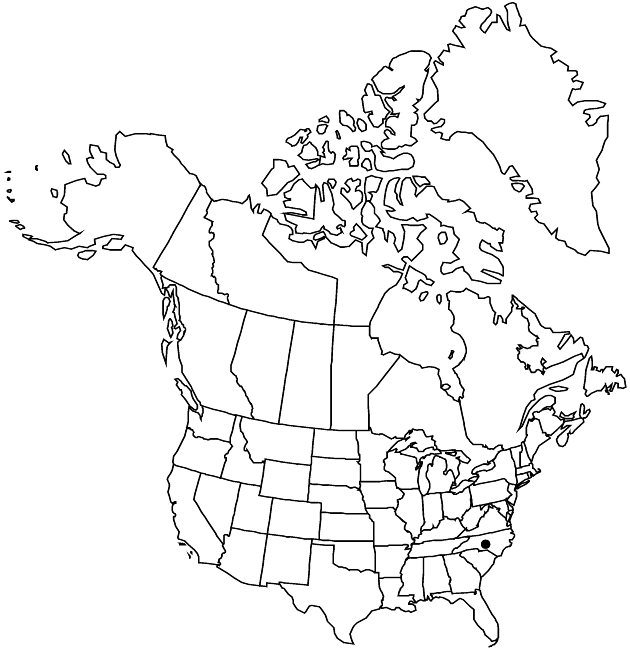Solidago villosicarpa
Sida 19: 292, figs. 1–6. 2000.
Plants loosely cespitose, 45–150 cm; caudices short, woody, or short rhizomes. Stems usually single, erect (proximally medium to dark-brown distally lighter, sometimes cyanotic, usually rounded, shallowly many ribbed), sparsely finely hispido-strigose proximally to densely so in arrays. Leaves: rosettes often present at flowering, early leaves smaller; basal and proximal cauline gradually to abruptly tapering to winged petioles, blades elliptic to ovate-elliptic, 90–210 (including petioles) × 40–70 mm, margins serrate-serrulate, ciliate, apices obtuse to broadly acute, faces abaxially glabrous or sparsely strigose, adaxially glabrous or sparsely strigose, mostly on nerves; mid to distal cauline sessile, blades lanceolate or elliptic, 20–650 × 10–30 mm, gradually reduced distally, becoming entire, apices acute to acuminate. Heads 50–100+ (1–10 per branch, more on much elongated proximal branches), in elongate to thyrsiform-paniculiform arrays 7–22 × 3–6 cm; branches ascending, racemiform or paniculiform, not secund, longest to 1/2 length of arrays. Peduncles 0.5–11 mm, densely short-hispido-strigose; bracteoles 5–10+, grading into phyllaries, sparsely short-hispido-strigose and sparsely to moderately glandular. Involucres campanulate, 5–8 mm. Phyllaries in 4–5 series, appressed, strongly unequal, outer ovate, acute, mid and inner broadly oblong (appressed), obtuse or rounded, sparsely strigose and moderately finely stipitate-glandular. Ray-florets 4–8; laminae 5–7 × 1–2 mm. Disc-florets 10–18; corollas 5–7 mm, lobes 1.5–2.2 mm. Cypselae (fusiform to obconic) 2.5–3 mm, moderately long-strigose; pappi 4–6 mm (some clavate).
Phenology: Flowering Sep.
Habitat: Sandy soils, live oak scrub on dunes, roadsides, open pine-oak woods, Atlantic coastal plain
Elevation: 10–20 m
Discussion
Of conservation concern.
Solidago villosicarpa is known only from New Hanover, Onslow, and Pender counties. It has a habit similar to those of S. hispida and S. squarrosa, leaves similar to those of S. erecta, and stem pubescence similar to that of S. puberula. The large, glandular involucres are unique within subsect. Squarrosae. It was compared to S. sciaphila when first described; it is not very similar to that Midwestern species. It is likely either a large-headed diploid like S. squarrosa or possibly an allopolyploid.
Selected References
None.
Lower Taxa
"lengthofarrays" is not declared as a valid unit of measurement for this property. "/2lengthofarrays" is not declared as a valid unit of measurement for this property.
